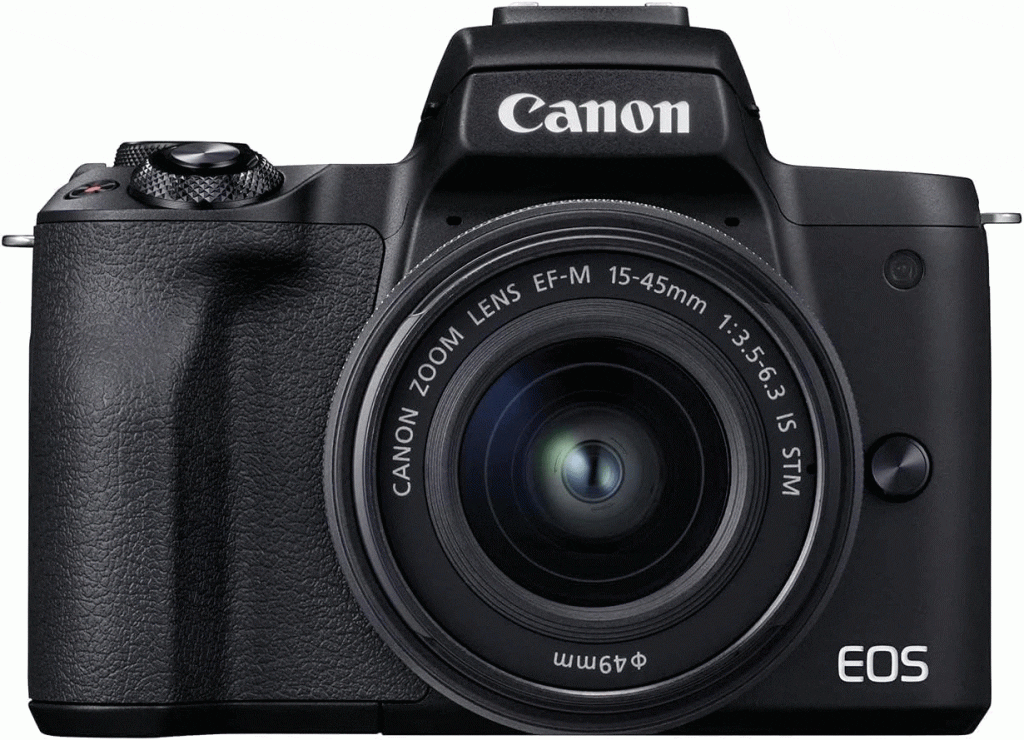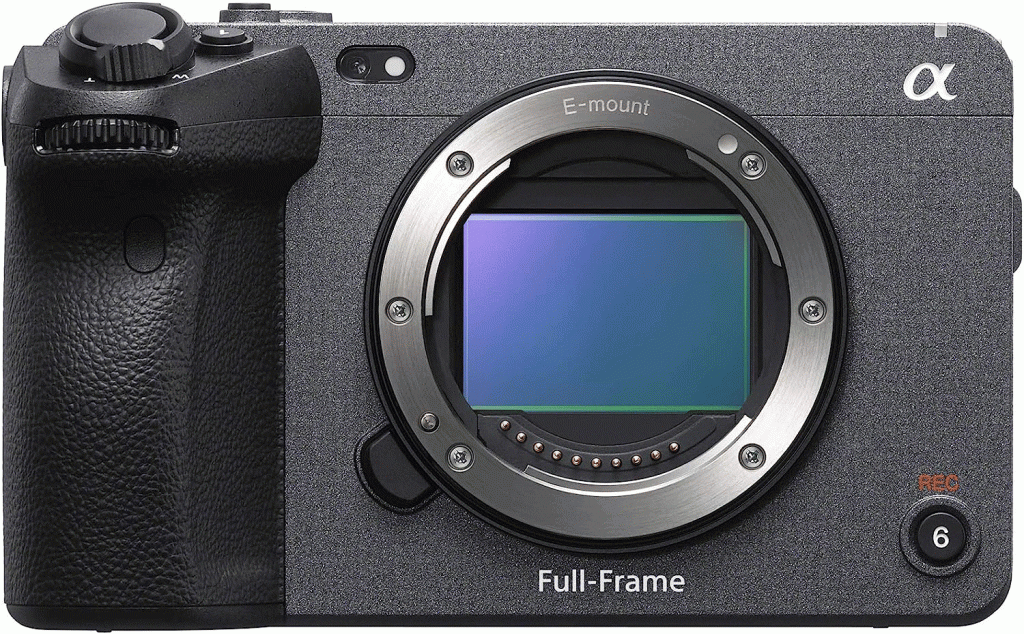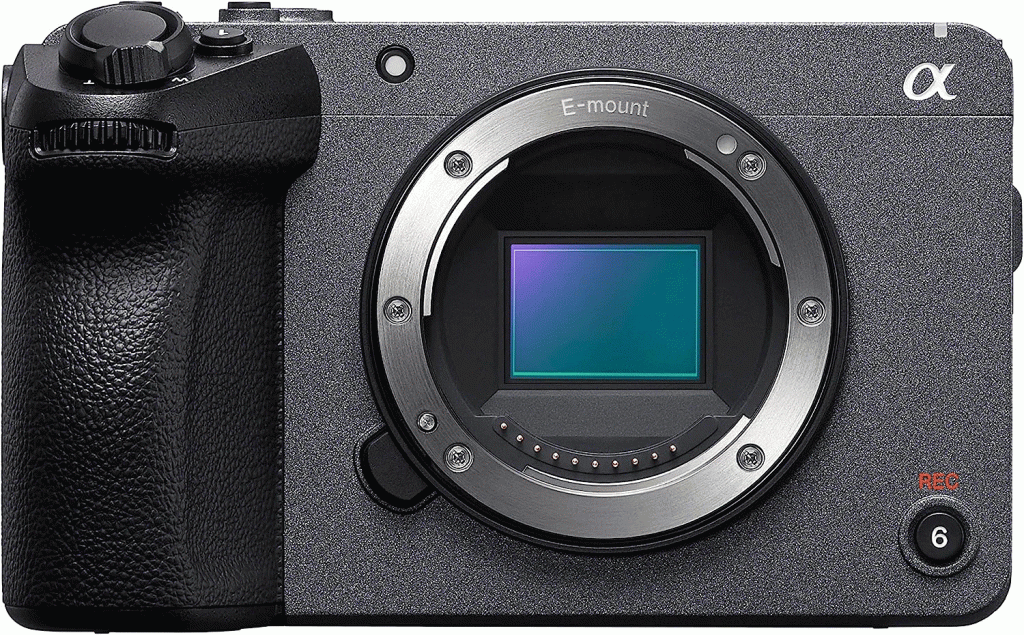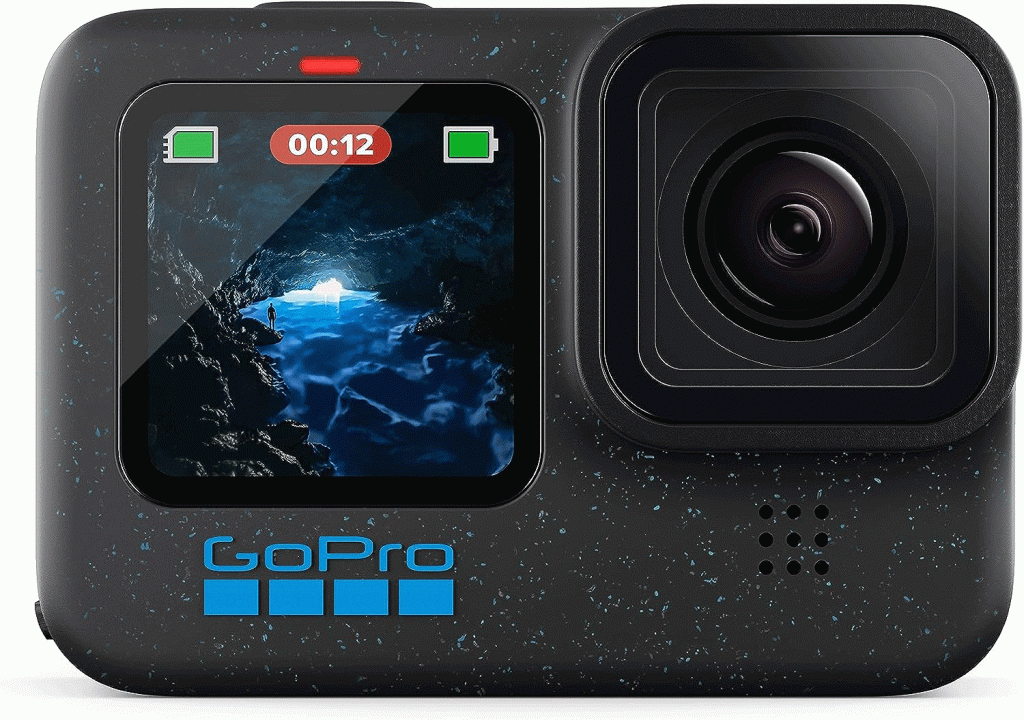How to Make Money Selling 4K Stock Footage
Choosing to make money selling 4k stock footage can be a profitable endeavor if executed correctly. High-quality stock footage is in demand across various industries, such as advertising agencies, film and television production companies, and content creators for social media platforms. Here are some steps to help you make money with your 4K stock footage:
1. Invest in Quality Camera Equipment for Stock Footage
To produce high-quality 4K stock footage, invest in a professional camera that can shoot in 4K resolution, a sturdy tripod, and possibly a gimbal for stabilization. Good lighting equipment and audio gear (if needed) are also essential. I recommend using a Sony FX30 or the better Sony FX3 if the cost doesn’t matter. Also, take a look at our other camera list.
Affordable Cameras for Producing Stock Footage
Creating high-quality stock footage doesn’t necessarily require a hefty investment in equipment. There are various affordable cameras on the market that can capture professional-grade video. Here are some options:
Canon EOS M50 Mark II for Selling Stock Footage
The Canon EOS M50 Mark II is a versatile mirrorless camera that offers 4K video recording. It features a 24.1 Megapixel (APS-C) sensor, an intuitive touchscreen interface, and built-in Wi-Fi and Bluetooth for easy sharing and transferring of your footage.
Sony FX3 to Make money Selling 4k Stock Footage
The Sony FX3 is a Premium Camera choice, offering 4K video capability. It comes with a 12-megapixel Full Frame sensor that specializes in low-light capability. This camera is also Netflix approved so you can use it for a lot more than just stock footage. This Camera is specifically built for video but it can also take photos.
Sony FX30 for Creating Stock Footage
The Sony FX-30 is the small brother of the FX3. This camera basically has the same body but has a 26mp super 35 apc sensor camera. So it’s not as good in lowlight but it’s still a great camera to do professional work. You can create some amazing stock video footage with this camera.
GoPro HERO 12 for creating Stock Footage
If you’re looking to capture action or adventure-themed stock footage, the GoPro Hero 12 is a fantastic choice. It’s waterproof, durable, and capable of capturing 5.7K video. It also features impressive image stabilization technology. It does things other cameras might not be able to capture such as underwater footage created easily and action stock footage. You can use the Gopro Hero 12 to capture underwater stock footage along with action stock footage.
DJI Osmo Pocket 3
For those interested in capturing stabilized handheld footage, the DJI Osmo Pocket 3 is a solid, budget-friendly option. This compact device features a three-axis gimbal and can shoot 4K video at 120fps. This camera easily creates 4k stock footage with ease.
When choosing a camera for stock footage, consider your specific needs and shooting conditions. Keep in mind that good lighting and stable shooting techniques can significantly enhance the quality of your footage, regardless of the camera you use.
2. Choose Your Subjects For Stock Footage
Choosing the right subjects for your stock footage is crucial, as it can significantly influence the demand and profitability of your work. When deciding on a subject, consider what kind of footage is most in demand by businesses, advertisers, and media outlets. Typically, these can be universal themes such as nature, cityscapes, people doing everyday activities, or footage that illustrates concepts like teamwork, success, or love.
However, while popular themes can guarantee steady demand, they also mean more competition. To stand out, consider focusing on niche subjects that are underserved in the marketplace. These could be specific hobbies, professions, cultural practices, or locations that aren’t commonly found in stock footage libraries. For instance, footage of rare wildlife, unique local traditions, or lesser-known tourist spots can attract buyers looking for something distinctive.
Quality is another important factor when choosing your subjects. It’s not just about the resolution, but also the composition, lighting, and color grading. Regardless of the subject, well-shot and professionally edited footage is more likely to sell. Therefore, always strive to improve your filming and post-production skills, and make sure your equipment is up-to-date.
Timing and trends also play a role in choosing subjects. For example, during the holiday season, there’s usually a high demand for footage related to celebrations and family gatherings. Similarly, if a certain topic is trending in the news or pop culture, related footage may see a spike in demand. Staying aware of these trends can help you capture footage that’s timely and relevant.
Finally, consider the longevity of your footage. While trendy subjects can provide a short-term boost, timeless subjects can provide a steady income over a longer period. Striking a balance between the two can help ensure a diverse and profitable portfolio. Remember, stock footage is a long game, and patience and consistency are key to success.
3. Obtain Necessary Permissions for Stock Footage
Obtaining necessary permissions for stock footage is a critical part of the process that should not be overlooked. Without proper permissions, you run the risk of legal issues down the line. One of the most common permissions you need to secure is a property release. This is a legal agreement between you and the owner of a property that allows you to use images or footage of that property. This could be a building, a piece of land, or even a pet. If the property is recognizable in your footage, it’s generally a good idea to get a release. You can create a model release form your self but I started using a app called Easy Release Pro on the Google Play Store.
Aside from property, you also need to consider people appearing in your footage. If individuals are recognizable in your video, you’ll need a model release. This is a legal agreement between you and the person in your footage, giving you permission to use their likeness for commercial purposes. Even if the person is a friend or family member, it’s still important to get this in writing to avoid potential disputes in the future.
In some cases, you might also need special permits to film in certain locations. These can include public parks, landmarks, and other attractions. The requirements vary greatly depending on the location and local laws, so it’s always best to do your research beforehand. Remember, just because a place is publicly accessible doesn’t mean you can film there without permission.
Finally, remember that the burden of securing these permissions falls on you as the videographer, not on the buyer of your footage. Stock footage platforms may require proof of these permissions before they allow you to sell your footage. Therefore, it’s essential to keep all your releases and permits well-organized and easily accessible. This not only protects you legally but also adds credibility to your work and makes it more attractive to potential buyers.
4. Edit and Optimize Your Stock Footage
Editing and optimizing your stock footage is a crucial step in the process of preparing your work for sale. This process not only enhances the visual appeal of your footage but also ensures it meets the technical standards required by stock footage platforms. When editing, focus on maintaining a high level of quality throughout. This includes proper color grading to ensure consistent and accurate colors, as well as careful trimming to remove any unnecessary or problematic parts of your footage. Edit your 4K stock footage using professional video editing software like Adobe Premiere Pro, Final Cut Pro, or DaVinci Resolve.
Optimizing your footage involves making it as user-friendly as possible for potential buyers. This means keeping your clips short and to the point, usually between 10 to 20 seconds long. Buyers typically prefer footage that gets straight to the point, without any excessive lead-in or lead-out time. Also, consider offering different versions of the same clip, such as a slow-motion version or a version with different color grading, to give buyers more options.
Another key aspect of optimization is ensuring your footage is easy to find. This involves using effective keywords and descriptions when you upload your footage to a stock platform. Use clear, descriptive language that accurately describes the content of your footage. Think about what potential buyers might search for when looking for footage like yours, and try to include those terms in your keywords and description.
Lastly, don’t overlook the importance of file format and resolution. High-resolution footage is more appealing to buyers as it offers more flexibility in post-production. Keep up with current trends and standards in video resolution and offer your footage in the highest resolution possible. In terms of file format, most stock platforms prefer footage in a common, widely compatible format like MP4 or MOV. Always check the submission guidelines of the platform you’re using to ensure your footage meets their specific requirements.
5. Add Metadata and Keywords to Stock Footage
Adding metadata and keywords to your stock footage is a crucial step that can significantly impact the visibility and discoverability of your work. Metadata includes essential information about your footage, such as the location where it was filmed, the date of filming, and any other relevant details. This information helps potential buyers understand more about the context of your footage and can influence their purchasing decision.
Keywords, on the other hand, are used by search engines to match your footage with potential buyers’ search queries. They help to categorize and describe your footage in a way that makes it easier for buyers to find. When choosing keywords, think about the main elements and themes of your footage. For example, if your footage shows a person hiking in the mountains, relevant keywords might include “hiking”, “mountains”, “outdoors”, “nature”, and “adventure”.
It’s also worth noting that the order of your keywords can sometimes affect their effectiveness. Many stock footage platforms give more weight to the first few keywords, so make sure to put the most relevant and descriptive keywords at the beginning. Also, try to avoid using overly general or irrelevant keywords, as this can lead to your footage being shown in unrelated search results, which can lower your overall search ranking.
Lastly, don’t overlook the importance of regularly reviewing and updating your keywords and metadata. As trends change and new keywords become popular, you may need to update your keywords to stay competitive. Similarly, if you notice that certain keywords are consistently leading to more sales, you might want to consider using those keywords more frequently in your future uploads. By paying close attention to your metadata and keywords, you can maximize the visibility of your stock footage and increase your chances of making a sale.
6. Submit Your Footage to Stock Agencies
If you are a videographer looking to monetize your work, there are several reputable agencies where you can submit your footage such as Shutterstock, Pond5, Adobe Stock, and Getty Images. Each platform has its own submission guidelines and review process, so be sure to familiarize yourself with their requirements. These agencies have platforms that cater to a diverse clientele, increasing the chances of your work being viewed and purchased.
Shutterstock is one of the most popular platforms for artists to sell their work. It’s a global marketplace for royalty-free images, footage, vectors, and illustrations. With its vast customer base, Shutterstock offers a significant opportunity for exposure and sales. The platform has rigorous submission and review processes to maintain high-quality content, ensuring that your work will be in good company.
Another agency where you can submit your footage is iStock by Getty Images. Known for their extensive library of stock images and videos, iStock is another excellent platform for videographers. While their review process for submissions is thorough, focusing on both technical quality and content, it ensures that your work reaches an audience that values quality.
Artgrid is another platform worth considering. Specializing in video content, Artgrid offers a streamlined platform for videographers to showcase their work. Their unique selling point is the story-driven approach to stock footage, which can give your work an edge in the competitive market.
Dissolve is yet another platform that caters specifically to filmmakers, providing high-quality footage for various uses. Their curated collections and emphasis on quality over quantity make them an attractive option for videographers looking for a more niche market.
Lastly, Motion Array is a noteworthy mention. Apart from featuring stock footage, Motion Array also provides resources like video templates, music, and sound effects. The comprehensive nature of their platform makes it an attractive option for potential buyers, thereby increasing the visibility of your work.
Remember, each platform has its submission guidelines and requirements, so it’s crucial to familiarize yourself with these before submitting your work. By choosing the right platform and preparing your footage accordingly, you can increase your chances of success in the world of stock footage.
7. Set Competitive Pricing for Stock Footage
Setting competitive pricing for your stock footage is a delicate balance. On one hand, you want to ensure that you’re adequately compensated for your time, effort, and skill. On the other hand, you need to price your work competitively to attract potential buyers in a market that’s becoming increasingly saturated. 4k Stock footage Prices should start at $25+ Dollars. I Personally lean more towards the $100+ Dollars.
Understanding the market is crucial when setting your prices. Consider the average price range for similar footage on various stock agencies. Take into account factors such as the quality, length, and uniqueness of the footage. High-quality, unique footage can command higher prices, while more common or lower-quality footage will likely need to be priced more competitively.
It’s also important to consider your target customers when setting your prices. Different types of buyers have different budgets and needs. For example, large corporations might be willing to pay more for high-quality, exclusive footage, while independent filmmakers or small businesses might be looking for more affordable options. Tailoring your pricing strategy to your intended audience can help you attract the right customers.
Finally, remember that pricing isn’t static. As the market changes and your skills and portfolio grow, you should periodically review and adjust your prices. This could mean raising your prices as you become more established and your work improves, or it could mean lowering your prices or offering discounts to attract more customers during slow periods. By staying flexible and responsive to market trends, you can maximize your earnings from selling stock footage.
8. Promote Your Stock Footage
Promoting your stock footage effectively is crucial to increasing visibility and sales. One of the best ways to do this is by creating a professional website showcasing your work. A well-designed website can serve as a portfolio, allowing prospective buyers to browse through your footage collection. Make sure to include detailed descriptions and tags for each video, making it easy for visitors to find what they’re looking for. Additionally, consider implementing SEO strategies to improve your site’s ranking on search engines, further increasing your visibility.
Social media platforms are another great tool for promoting your stock footage. Platforms like Instagram, Facebook, and Twitter have huge user bases and offer various tools for businesses. You can use these platforms to share previews of your footage, behind-the-scenes content, or news about new additions to your collection. Regularly engaging with your followers and participating in relevant online communities can also help build your brand and attract potential customers.
YouTube is a particularly effective platform for promoting stock footage. You can create a channel to showcase your work, using each video’s description to direct viewers to your website or the stock agency where they can purchase the full footage. This not only exposes your work to YouTube’s vast user base but also takes advantage of the platform’s video-centric nature.
Finally, consider using paid advertising to promote your work. Many social media platforms offer targeted advertising options that allow you to reach a specific audience. For instance, Facebook ads can target users based on factors like location, age, interests, and more. Although this requires an upfront investment, it can significantly increase your reach and lead to higher sales in the long run.
9. Expand Your Stock Footage Portfolio
Expanding your stock footage portfolio is a strategic move that can significantly increase your earning potential. The more diverse and extensive your collection is, the more likely you are to meet the needs of various clients. One way to expand your portfolio is by incorporating different types of footage. This could range from nature and wildlife scenes to cityscapes, lifestyle shots, or even abstract visuals. By offering a wide variety of footage, you increase the chances of potential buyers finding exactly what they’re looking for in your collection.
Another strategy for expanding your stock footage portfolio is improving the technical quality of your work. Shooting in uncompressed data allows for better color grading and a broader dynamic range in your footage. This results in high-quality videos that can command higher prices in the market. Continually upgrading your equipment and honing your filming skills can result in noticeable improvements in the quality of your footage.
In addition to diversifying the type and quality of your footage, consider creating footage that fills gaps in the market. Researching what’s available and identifying what’s missing can help you produce unique footage that stands out. This could involve creating footage around emerging trends or underserved niches. Providing such footage increases your appeal to clients who are looking for something specific that isn’t readily available elsewhere.
Lastly, promoting your work effectively is crucial to expanding your stock footage portfolio. This involves showcasing your work on various platforms, creating websites on platforms like Shopify and engaging with potential clients, and continuously marketing your collection. A well-curated and promoted portfolio can attract more customers and lead to higher sales, effectively expanding your stock footage portfolio. With these strategies, you can broaden your reach and increase your success in the stock footage market.
10. Monitor Your Stock Footage Sales and Adjust
Monitoring your stock footage sales is essential for understanding how well your portfolio is performing. Regular tracking allows you to identify which clips are selling well and why. This could be due to the quality, subject matter, or uniqueness of the footage. Understanding the factors driving your successful sales can inform your future shooting and editing decisions, helping you create footage that’s more likely to sell.
Alongside your top-selling footage, it’s also important to pay attention to the clips that aren’t selling. If certain types of footage consistently underperform, it may be worth reconsidering whether to continue producing similar content. It could be that the market is oversaturated with that type of footage, or perhaps it’s not as high-quality or unique as it needs to be to stand out.
Adjustments based on your sales data shouldn’t be limited to the content of your footage. They should also extend to pricing. If your footage isn’t selling, it could be that it’s priced too high for the market. Conversely, if your footage is selling very quickly, it might be undervalued, and you could potentially increase your prices. Regularly reviewing and adjusting your pricing in response to sales trends can help you maximize your earnings.
Finally, keep in mind that the stock footage market is continually evolving. Trends shift, new themes become popular, and buyers’ needs change. Continuously monitoring your sales and being willing to adjust accordingly is key. This doesn’t just involve reacting to changes but also anticipating them. By staying informed about industry trends and buyer behavior, you can adapt your portfolio to meet emerging needs, keeping it relevant and competitive.
By following these steps and dedicating time and effort to producing high-quality 4K stock footage, you can potentially earn a substantial income from your work.






